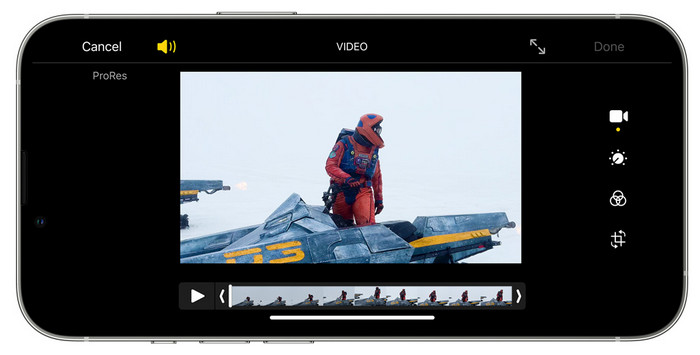Apple announces ProRes support for iPhone 13 Pro and iPhone 13 Pro Max (not include 128GB iPhone 13 Pro models). Then you may be confused about what is ProRes, why ProRes is not supported in 128GB iPhone 13 Pro models and how to record ProRes 1080p / 4K video on iPhone 13? Never mind. You can find all the answer in this post.
To Export Your ProRes Video from iPhone 13 to Computer for Editing
Try MacX MediaTrans! It offers No.1 fast speed to transfer iPhone camera roll videos including the newly ProRes HD/4K footage to Mac or Windows computer. It guarantee the original video quality, giving you more space for Apple ProRes footage editing on the Final Cut Pro, Premiere Pro, DaVinci Resolve etc.
Part 1. What Is Apple ProRes?
Apple ProRes is a high quality, lossy video compression formar developed by Apple Inc. for use in post-production that supports video resolution up to 8K. ProRes is a line of intermediate codecs, which means they are intended for use during video editing instead of user viewing. It's initially introduced in 2007 with Final Cut Studio 2, and it's widely used in Final Cut Pro, Premiere Pro, DaVinci Resolve and so on. Recently ProRes is available to be recorded on iPhone 13 Pro (Max).
Moreover, ProRes is not a singular thing, though. It’s a family of six quality standards, from the space-saving 'ProRes 422 Proxy' right up to the ultra-high-quality 'ProRes 4444 XQ'. Here are the details about ProRes quality standards:

Part 2: How to Record ProRes HD/4K Video on iPhone 13?
iPhone 13 Pro (Max) is the first smartphone to provide an end-to-end pro workflow, allowing you to record and edit in ProRes or Dolby Vision. How to record ProRes HD or 4K video on iPhone 13? It can be fairly easy.
Step 1: Open your Camera app on your iPhone 13 Pro (Max). Slide left or right to find out the PRORES mode.
Step 2: Tap the Record button or press either volume button to start recording.

Step 3: When you're done, tap the Record button or press either volume button to stop recording.
Tips: If you are using this mode for the first time, you can set your own preferred setting. Just click on the resolution (HD by default) and aspect ratio. Here you can switch HD to 4K or 4:3 aspect ratio to 16:9 and vice versa.
After you've done, you can directly edit ProRes footage on your iPhone 13 Pro (Max). But it requires high on your iPhone storage space. But the fact is that ProRes footage could takes up your iPhone Storage space quickly, not to mention the other data. Therefore, you're recommended to export ProRes videos to Mac for editing on Final Cut Pro X, Premiere Pro etc.
MacX MediaTrans is a nice choice for you. This video transfer allows you to export any videos from iPhone camera roll to Mac with original quality reserved. It gives you more post-production space for your ProRes editing on computer.
Part 3: FAQs
Even though you get to know what is ProRes, you may still be confused with more ProRes issues. Here, we'd like to answer the frequently asked ProRes questions.
1. Why iPhone 13 Pro doesn't support ProRes 4K video in 128GB?
You know 4K video could take a huge size on your iPhone, but you may not know that the ProRes 4K could make it worse. One hour of RAW 4K content requires close to 110GB of storage; approximately 2GB per minute. Obviously, 128GB iPhone 13 Pro is not big enough for you to shoot 4K ProRes videos at will.
2. What cameras can record ProRes raw?
As ProRes RAW goes, an increasingly growing of cameras support to record ProRes Raw footage, such as DJI Zenmuse X7, Atomos NEON 17/ 24/ 31/ 55, NINJA V, SUMO 19, SHOGUN INFERNO, SHOGUN 7 and so on.
3. Can QuickTime play ProRes files?
Yes. After you install Pro Video Formats on your Mac, you can view ProRes RAW files with QuickTime Player. And QuickTime Player on the Windows OS can offer real time playback of Apple ProRes files.
4. Is ProRes better than H.264?
Yes, ProRes is virtually lossless, and is specifically designed for this purpose. H.264 is highly compressed and not designed for editing.
5. Is ProRes raw HDR?
ProRes RAW is based on the same principles and underlying technology as existing Apple ProRes codecs, and is ideal for High Dynamic Range (HDR) content creation in Final Cut Pro, Motion, and Compressor.








